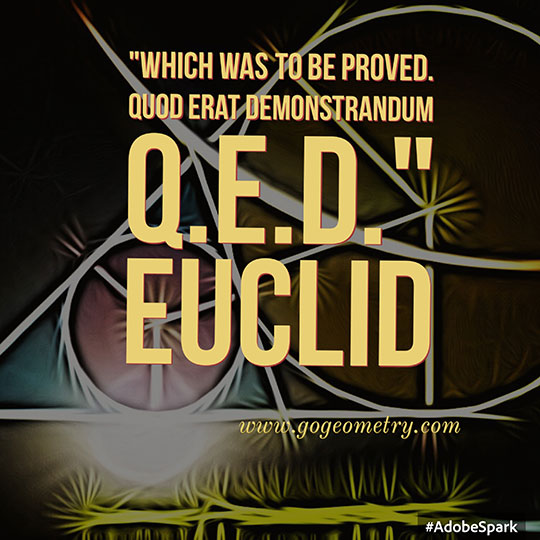|
|
|
Euclid. About
325 BC-265 BC. Greek geometer, author of the most important textbook of
all time, The Elements.

"Which was to be proved."
Elements, Book I, Proposition 4.
Latin translation: Quod erat demonstrandum
(Q.E.D.)

"This wonderful book, with all its imperfections,
which are indeed slight enough when account is taken of the date it
appeared, is and will doubtless remain the greatest mathematical
textbook of all time."
Thomas L. Heath

"Almost from the time of its writing and lasting almost to the present,
The Elements has exerted a continuous and major influence on human
affairs. It was the primary source of geometric reasoning, theorems, and
methods at least until the advent of non-Euclidean geometry in the 19th
century. It is sometimes said that, next to the Bible, The Elements may
be the most translated, published, and studied of all the books produced
in the Western world."
Bartel Leendert van der Waerden (1903-1996)

"Ptolemy the First once asked Euclid whether there was any shorter
way to a knowledge of geometry than by study of The Elements, whereupon
Euclid answered that there was no royal road to geometry."
Commentary on Euclid's Elements I. Proclus Diadochus. 410 - 485.

According to Stobaeus, “some one who had begun to read geometry with
Euclid, when he had learnt the first theorem, asked Euclid, ‘But what
shall I get by-learning these things?’ Euclid called his slave and said
‘Give him three pence, since he must make gain out of what he learns.’”
Euclid, Elements (ed. Thomas L. Heath)

That, if a straight line falling on two straight lines makes the interior angles on the same side less than two right angles, the two straight lines, if produced indefinitely, meet on that side on which the angles are less than two right angles.
Postulate 5, Euclid, Elements (ed. Thomas L. Heath)

Quote in motion: Click on the figure below.
|
|